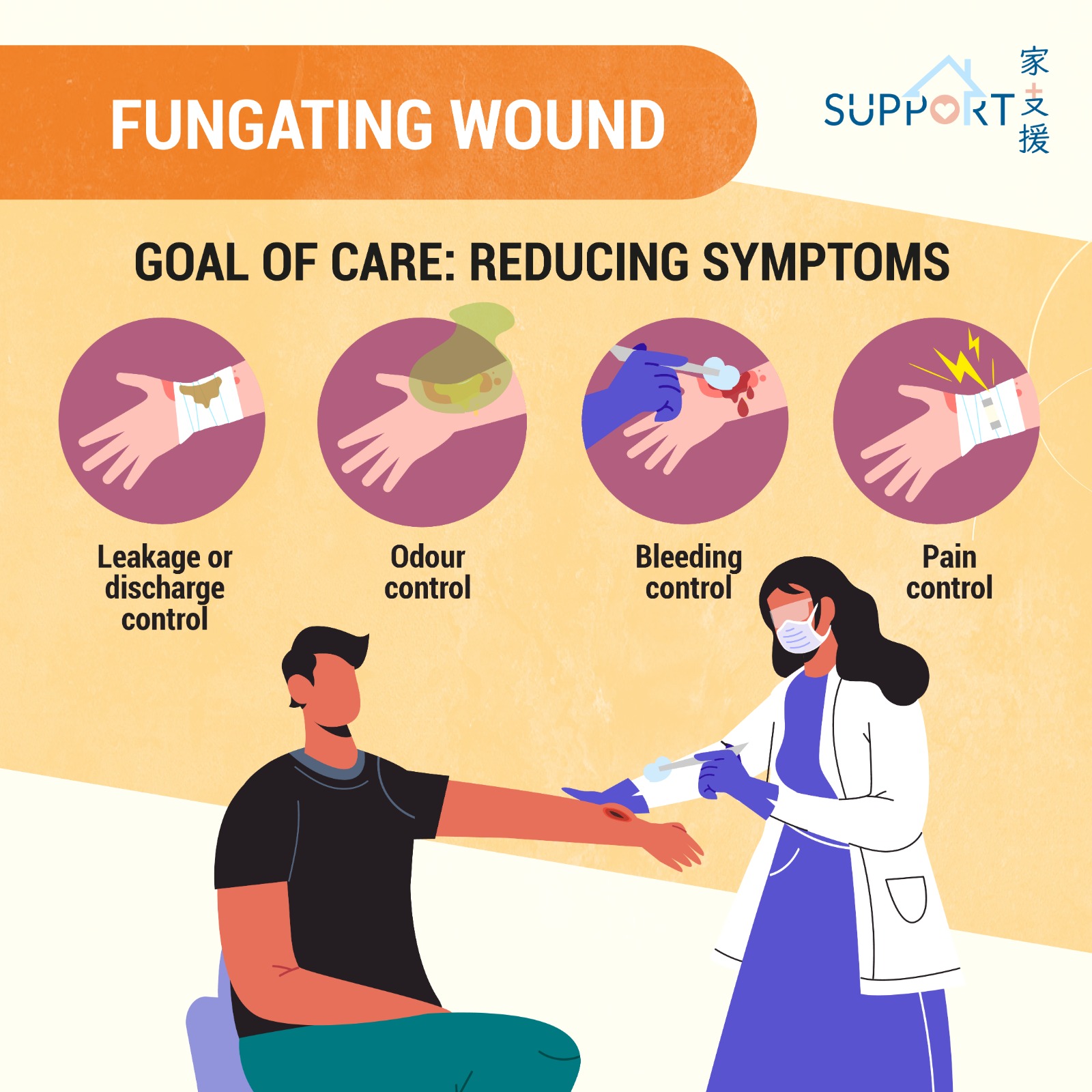
Fungating wound is very difficult to heal completely. Reducing symptoms is always the goal of care. You can seek advice from a specialist nurse in wound care, often called wound nurse.
1. Controlling leakage or discharge
Leakage or discharge is probably the most common symptom of a fungating wound. An absorbent dressing with additional padding can solve this problem. The dressings aim to keep the wound clean and moist, prevent infection and reduce odour. Your nurse will assess your wound and decide on the best dressing material for your wound. You are also required to clean the wound and change the dressings frequently.
The leakage or discharge may damage the surrounding healthy skin, making it sore ad red. You can apply a barrier cream or film to the skin around the wound to protect it.
2. Controlling odour
It is common to have unpleasant smell from a fungating wound because of infection. The smell can be strong enough to make you and other people feel sick.
Your nurse can use different types of dressings that can reduce the wound’s odour. These include charcoal dressings or silver dressings. Your nurse may also apply antimicrobial dressing or cream (e.g. metronidazole cream) to reduce the bacteria in your wound. While dressing, it may be better to do it in a separate and a ventilated room so that the smell will not affect others.
If your wound is very big and contains lots of dead tissue, your doctor may remove some of the dead tissue by surgery. This is called wound debridement. Your nurse may also spray some warm saline on the wound to remove any extra liquid and dead tissue.
Sometimes, your doctor may also prescribe oral antibiotics to control the infection, especially if the healthy skin is also infected and becomes red.
3. Controlling bleeding
A wound will easily bleed as the blood vessels in the area is very fragile. Dressings that are non-sticky can prevent bleeding during change of dressing. If you need to change the dressing yourself, it is best to clean the wound or moist the inner gauze with warm saline or water. Don’t rub or peel the inner dressing with any force. This can dislodge fragile tissue and cause bleeding.
If there is heavy bleeding, please keep calm and call your nurse or healthcare professionals using the emergency hotline. Immediately apply an absorbent pad or dark colored towel to cover any excess blood. Cover the wound with a clean towel and press on it firmly with your palm to stop bleeding. Stay calm and sit down to make sure you are in a comfortable position.
4. Controlling pain
If the tumor damages the skin or nerves, you may feel pain. Your doctor will prescribe the painkillers and adjust the dose for you. If the pain worsens during dressing, tell your nurses and they may change a different dressing for you. You can also take some painkillers before wound dressing.
You may feel upset and embarrassed about your wound. You may even feel isolated as you may not want to talk with others about your wound. It is normal to have these worries. The best support is to talk to your trusted family and friends. Sharing your feelings can relief your stress. When going out, you may also hide your visual dressings. For example, you can use scarves to hide a wound on your neck or you can wear long sleeves to cover the wound at the arm.
Special thanks to Dr Wendy Wing-Lok Chan, Department of Clinical Oncology, the University of Hong Kong, for authoring this article.



